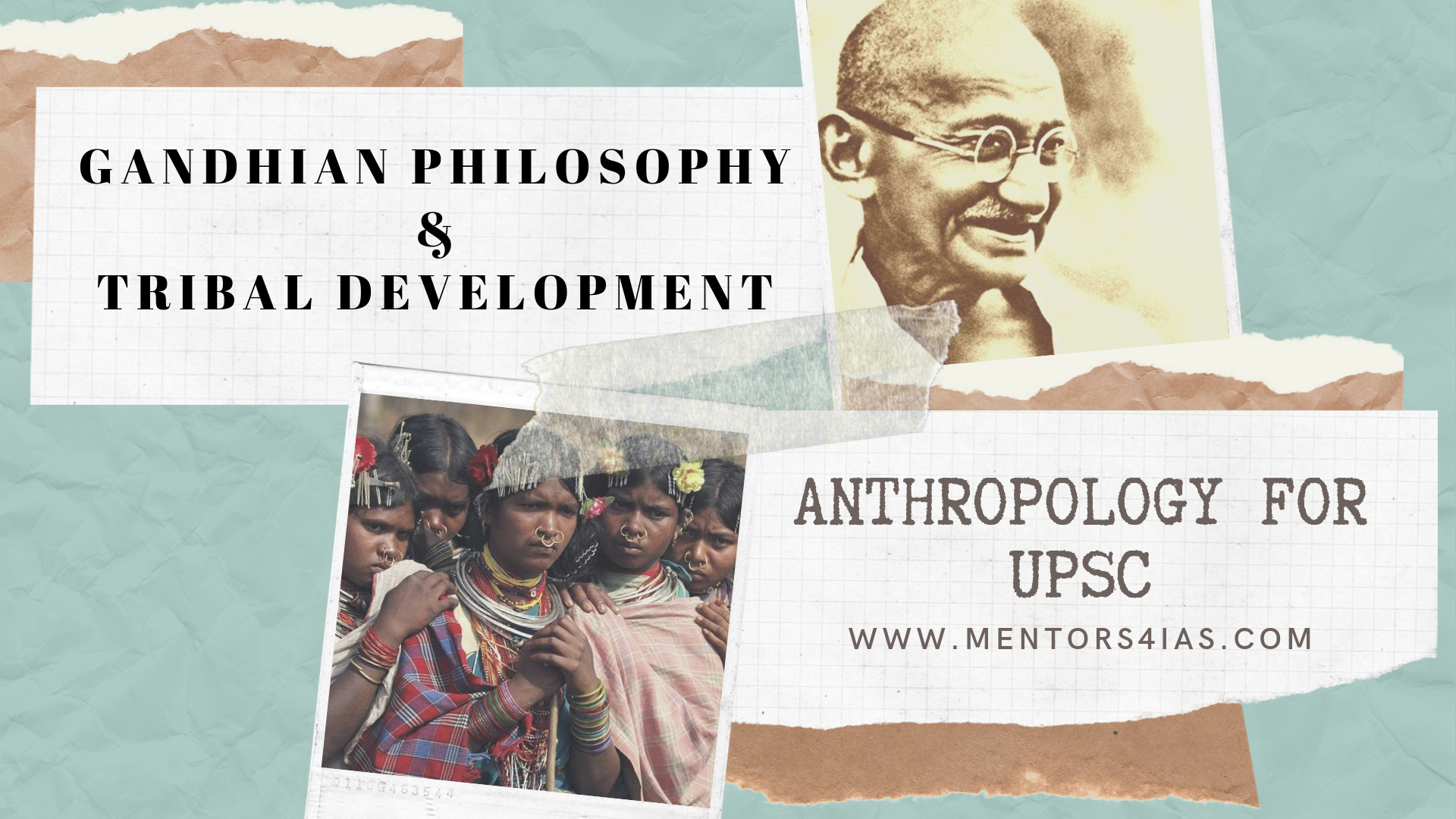Relevance of Gandhian philosophy in Tribal development
Paper 2: Approach to Tribal development, Tribal welfare, Measures to address tribal problems
Marginalisation of Tribals
- The tribal areas is believed by the anthropologists to host the earliest people. This resource rich belt is in constant news due to clashes between the tribal people and the outsiders. They are fighting to protect their land and resources fearing physical dislocation in the wake of economic development.
- The opening up of Indian economy to the global corporations eying the material resources there, have triggered this clash of interests between the local stake holders and the big businesses.
- It is also true that often most of tribal people remain marginalised in all parts of the world with animal like existence from which they should be rescued, educated and civilised. They may be physically evacuated from their habitat, if necessary, for developmental purposes – so very essential for the economy of a modern nation-state.
The problem of tribal identity and their resources has become contentious again. - Earlier tribal settlements in and around the forests were not usually interfered with by the feudal lords or urban/rural elite. It happened with the onset of industrial revolution and subsequent expansion of economy and society. Consequently, the urban, ‘civilised’ merchant capitalist started encroaching upon the territory of the tribal or indigenous people for trading the forest produce, their natural wealth. The expansion of industry, market and urbanisation is largely dependent upon the forest. Pointedly, in India, it started with British colonialism.
- In the process of modernisation and development, paradoxically the tribes got marginalized further. As a matter of fact their state and fate is inversely related to modernization which has become more intense with globalization.
- The present theory and practice of development in India is not conducive to inclusive growth which is why the poor and the poorer communities are getting marginalized further. There is absolutely no chance of their survival under the given socio-economic and political conditions prevailing not only in India but anywhere in the world.
Relevance of Gandhian model of development
- There was, during our freedom struggle and still is only one alternative, the Gandhian model of social and economic development where all three components, namely resources, tribes and the state could have a cordial and harmonious relation with one another such that one would lead to the growth and well being of the other.
- This model of development will save both the tribal people and their resources from exploitation by the corporations through the state.
- The tribal mode of village existence was absolutely compatible to Gandhi’s philosophy of village India. He always said that India lives in villages and if its villages perish, India will perish too. Thus we should develop them further rather than towns and large cities.
- He advocated that true democracy and justice could only be dispensed at the village level with decentralised administration and judicial system ie promote gram swaraj.
- Thus there is need to strengthen the gram panchayat that was truly effective in every tribal society in the form of tribal or kabila panchayat. It has always been very powerful and operated at various levels from the village to a region.
- Gandhi used to say that nature has everything for human needs but not for her greed. Thus the principle of sarvodaya must be invoked because that is the only way to allow sustenance of all natural species including the homo sapiens and the natural resources above all. Gandhi himself has strongly recommended the ‘principle of non- possession’ for attaining sarvodaya.
- Incorporation of such principles of social, economic and political development will help in balancing development and tribal resource utilization.
- Gandhi had given us not only an alternative model of development but also redefined the concept of civilisation in direct contrast to the modern western notion which is given more to material development and physical comfort.
- Further the philosophy of voluntary poverty or non- possession of goods, aparigraha as weaved by Gandhi into his theory of non-violence, has tribal origin. It must be a theorization of their practical existence as observed by our ancient sages and philosophers
Conclusion–
- Thus, it may be concluded that the existing modern state is theoretically, ideologically and practically pitted against the tribes. Its policies rather promote their physical dislocation and social decimation. Whatever measures might be taken and howsoever honest they may be, the twin processes of physical dislocation and social decimation remain unavoidable since the state is given to modernization of economy and society. Its citizens in competition with others wish to maximise their own material progress and profit based on exploitation of resources both human/cultural and natural.
- The benevolent state on the contrary is given to conserving all natural resources for the benefit of its people and their posterity, thus sharing these amongst them on basis of ‘to each according to one’s needs’ only. If the modern state assumes such nature and character, then the whole debate between the two models of tribal development based on ‘isolation’ from the mainstream society and ‘integration’ with it, will become redundant. The peace shall prevail everywhere thus realizing swaraj in letter and spirit.
Q. Relevance of Gandhian philosophy in Tribal development (10M/15M)
Structure of your answer:
- Write briefly about the present model of development and how it is against the interest of the marginalised section of society (tribes in particular)
- Explain Gandhian model of inclusive development
- Mention the following and relate it to tribal development
- Gram Swaraj
- Gram Panchayat
- Principle of sarvodaya
- Principle of aparigraha
- Conclusion
For more case study and articles related to anthropology: Click here
For UPSC anthropology preparations: click here
For UPSC anthropology videos: Click here












